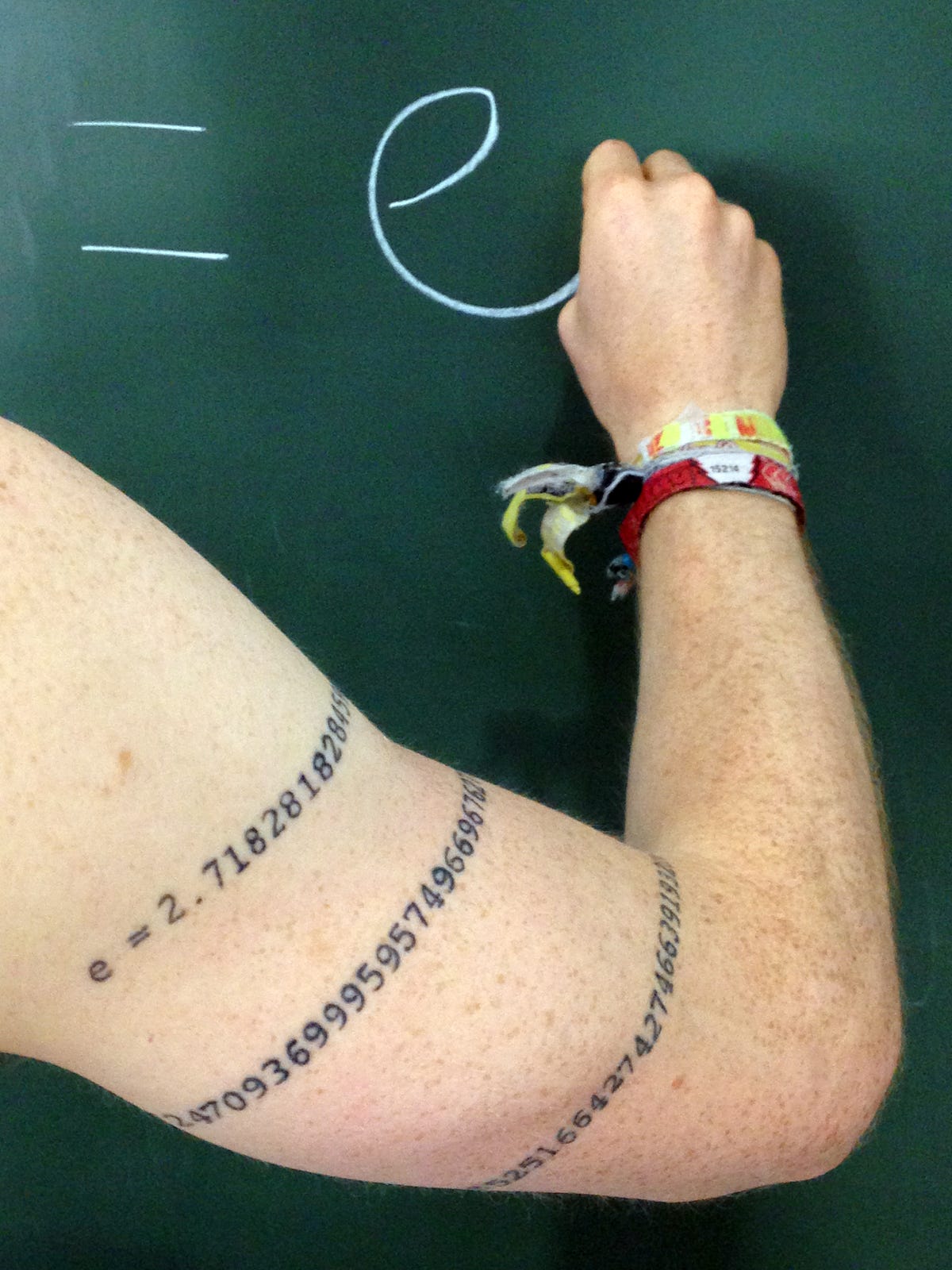Funbers 1.618…, 2 and e
Funbers 1.618…, 2 and e
The fun facts about numbers that you didn’t realise you’ve secretly always wanted to know…
1.618… — THE GOLDEN RATIO
Why are some things nice to look at and others simply aren’t? Notre Dame Cathedral, the Great Pyramids, the Parthenon, Leonardo Da Vinci’s Last Supper… All great to look at and all created with the Golden Ratio. It’s a number, like any other, but the way it’s formed is what makes it so special. You take a straight line and then divide it up with the following rule: the short part and long part must be in the same ratio as the long part and the whole line. It sounds more complicated than it is. Let’s have a go…


If we chop the line at the dot we divide it into two parts and we have three different lengths of line. The original line has length A, the short part B and the long part C. To get the golden ratio we must have B/C = C/A. Solving this with a little bit of maths (put A = 1 as it’s the original line and then you have two simultaneous equations with B + C = 1) tells us that we have to put the dot 0.618… along the original line — so just under two thirds of the way along. Now the clever part is that if you add the length of the long part 0.618… to the original length 1, you get 1.618… aka the Golden Ratio. It pops up everywhere in nature from sunflower petals to the spiral of a shell. It is even credited with the correct facial proportions that make people attractive.

2 — TWO
Double double toil and trouble… even Shakespeare loved the number two and he knows a thing (or two) about language. Two is a powerful number: it can mean two opposites or two partners. Friends and enemies, light and dark, good and evil — we like pairs. It’s also a really important number in maths. It’s the first even number, and we actually define even numbers as the ones that can be divided by two. It’s also the first prime number and the only one that is even. Remember, a prime number is one that has only two factors: itself and 1 — nothing else multiplies together to make it. So for 2, we have 1 x 2 = 2 and that’s it. For any other even number, say 4, we can divide it by 2, so 2 x 2 = 4. This means that 4 has three factors: 1, 4 and 2. So it’s not prime.

2.7182… — e


Euler’s number and also my favourite number — like the Navier-Stokes equations, when you have a tattoo of something it kind of has to be your favourite. It pops up anytime you start doing calculations with growth and growth rates. For example, let’s talk money. Suppose you have £1 and I give you two options for investment: I’ll either give you 1/12th interest every month for 1 year or I’ll give you 1/365th interest every day for 1 year. Which do you take?
It’s kind of a trick question because we can of course do the maths and see which is best… £1 after one month is worth £1 x (1 + 1/12) = £1.08. After two months we have £1.08 x (1 + 1/12) = £1.17, after three months we’re at £1.17 x (1 + 1/12) = £1.27 and so on. After one year our grand total is £2.61, not bad! Now what about the second option, well after one day we have £1 + 1/365 = £1 (plus a tiny bit). After one month (30 days) we have £1.09, so actually one penny more than option one. And after a whole year we have £2.71, so an extra 10p! So the pattern seems to be that the more often we are paid interest (despite it being a lower percent), the more money we get. What about if we are paid every hour? Well that’s 24 x 365 = 8760 hours in a year, at a rate of interest of 1/8760th per hour. The grand total for the year gives us £2.71, the same as before. Huh? Why didn’t it increase? The answer is it actually did, but you can’t have part of a penny.
What’s actually going on here is that we are calculating the number e to higher and higher levels of accuracy. We’ve been working out the answer to (1 + 1/n)^n for n = 12, 365 and 8760. If we let n go to infinity then we get the exact value of e. Amazing, right? Probably so amazing you just want to get the first 100 digits of the number tattooed in a spiral around your arm…

